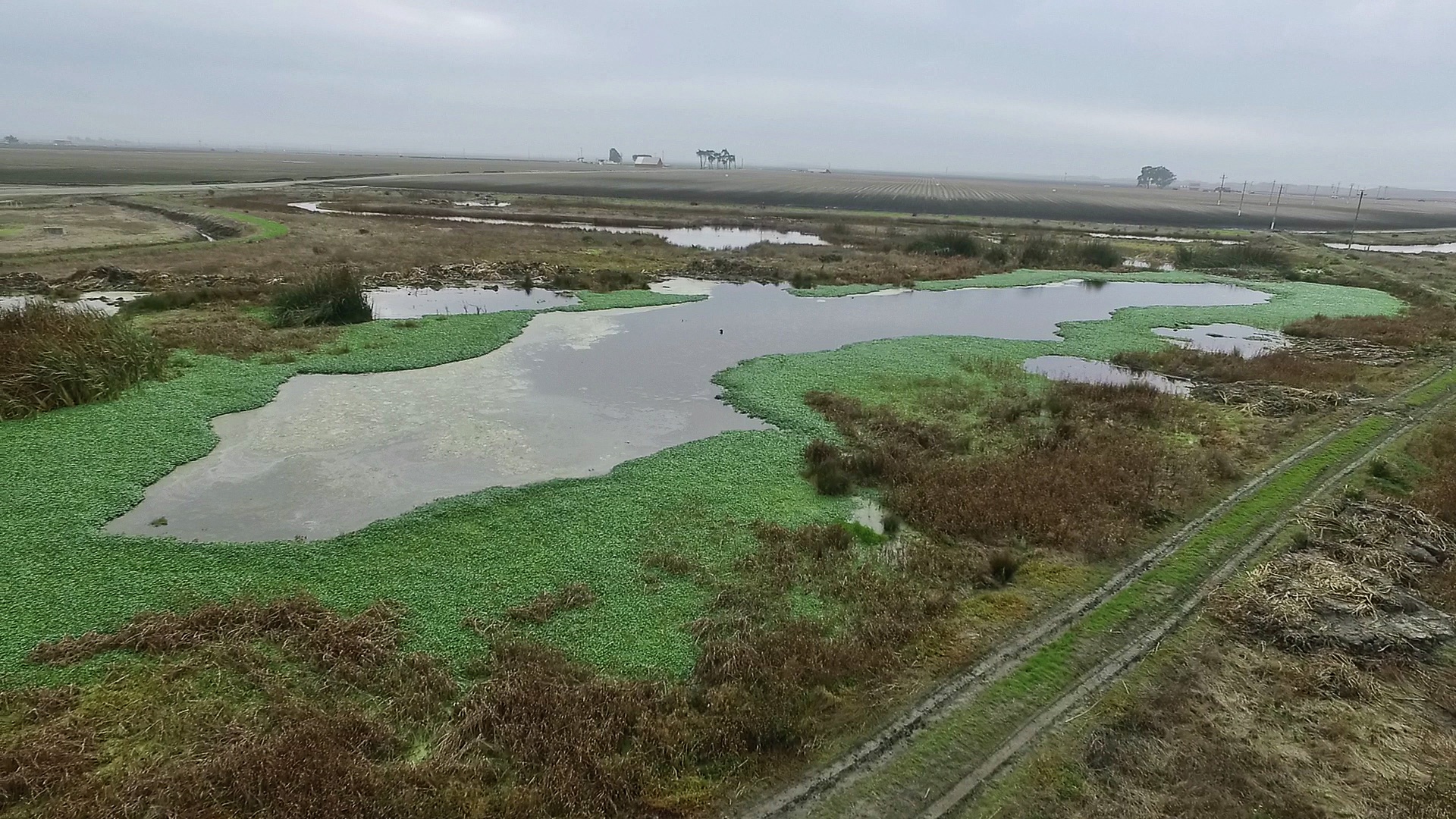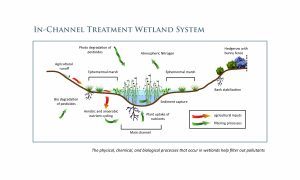Treatment Wetlands
Improving water quality and creating wildlife habitat

What is a Treatment Wetland?
A treatment wetland, or constructed wetland, is a man-made version of a natural wetland. Like natural wetlands, treatment wetlands have an incredible ability to remove pollutants from water runoff. Some agricultural practices use pesticides and excess fertilizers. These pollutants are washed into streams and eventually out to the ocean, sometimes harming wildlife and the communities downstream. The native plants and bacteria that grow in treatment wetlands filter pollutants out of the water and produce dramatically cleaner water downstream! Treatment wetlands can be paired with bioreactors to further enhance water quality downstream. CCWG uses treatment wetland and bioreactor systems to clean runoff water from surrounding agricultural fields in the Castroville and Moss Landing areas.
Scroll down to the “Resources” section and click on the “Flora and Fauna” icon to see photos of the plants and animals that we find in the treatment wetlands! The “Resources” section also has other useful tools to illustrate the scientific benefits of treatment wetlands and the successes that CCWG has had by using constructed wetlands for water quality treatment.

The diagram above illustrates the movement of nitrates (found in fertilizers and pesticides) through a wetland system. Sunlight, sediment, and vegetation naturally filter out pesticides and other harmful runoff nutrients from the water. Nitrogen moves from the atmosphere, into the soil, into vegetation, and back into the atmosphere in various forms. Wetlands help with denitrification, or the removal of nitrogen from water.
Benefits of Treatment Wetlands
During the 20th century, many wetlands in the Salinas Valley were transitioned to agricultural uses through ditching, levees and berms. Though increased agriculture boosted the region’s economy, increased crop production also lead to degradation of soil, habitat loss, and water quality issues. In land that is not viable for agriculture, we can use treatment wetlands as a restoration strategy to mitigate these problems. When we construct treatment wetlands on plots of land with infertile soil, this land becomes valuable in a new way. Treatment wetlands improve water quality, provide wildlife habitat, help with flood control, and mitigate the impacts of saltwater intrusion.
In 1996, CCWG helped Monterey County develop the Moro Cojo Slough Management and Enhancement Plan. This plan creates a framework for ecological management goals in the watershed. Since 2001, CCWG has organized the implementation of the Moro Cojo Slough Management and Enhancement Plan, leading to the restoration of about 124 acres of wetlands and 41 acres of upland habitat in the Moro Cojo Slough area alone.

